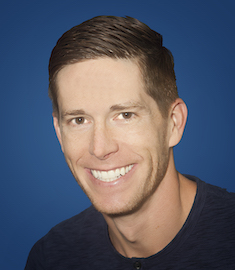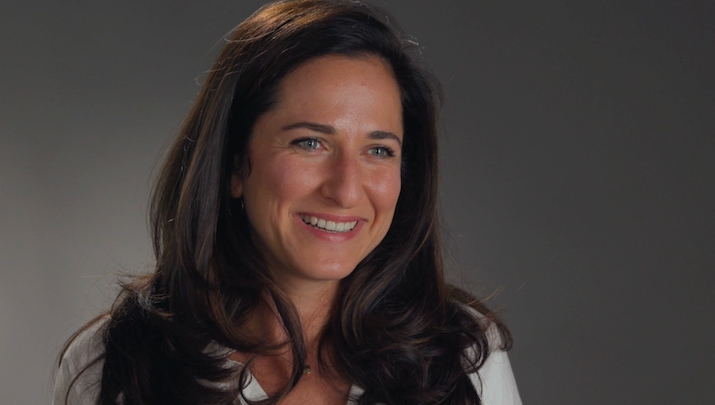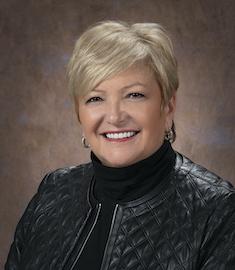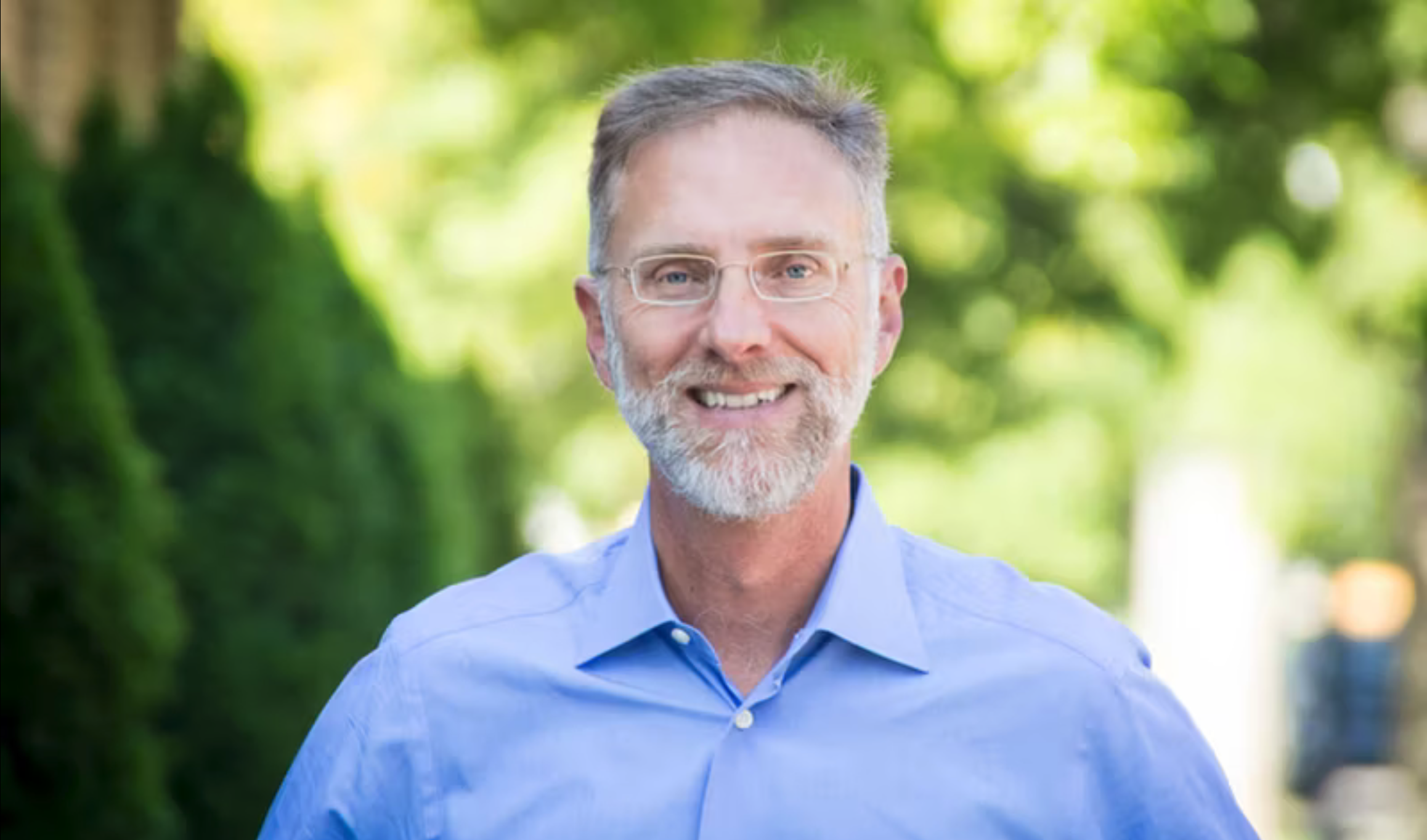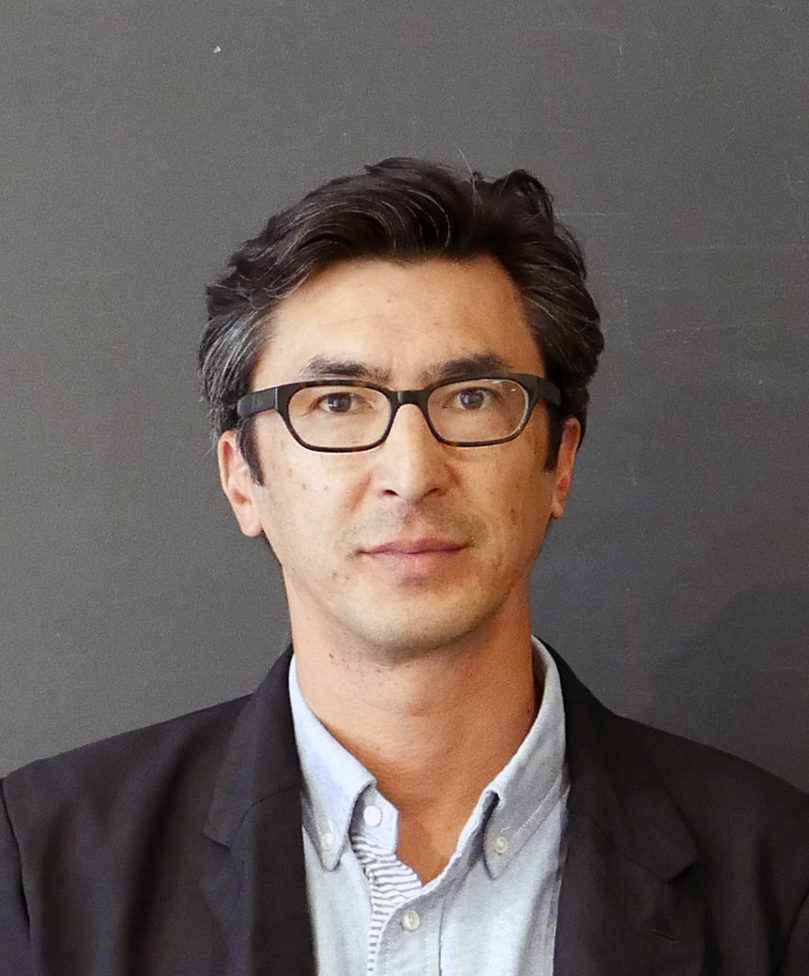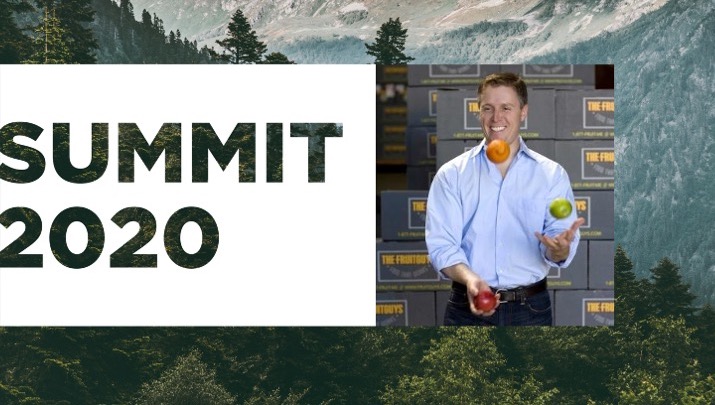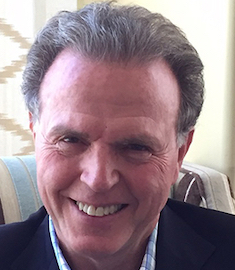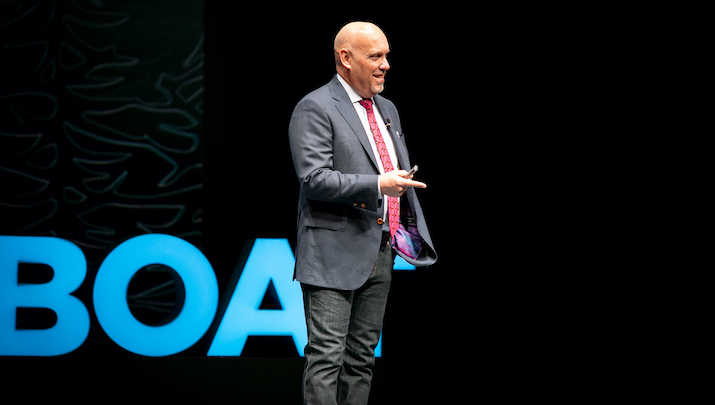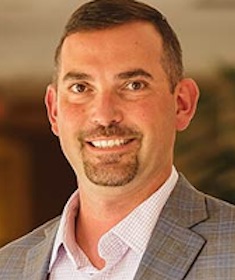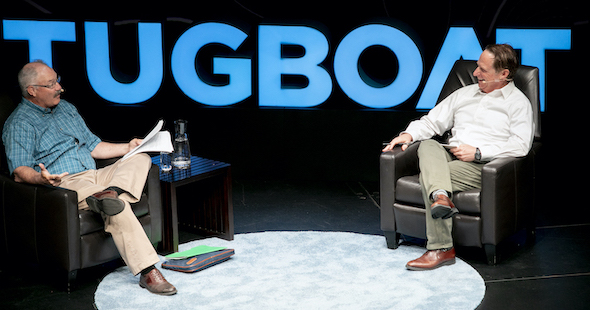What a New Machine Unleashed Within Our Team
At our Evergreen® company, Kenmore Envelope, we print, cut, and fold envelopes. More specifically, to throw some fancy envelope jargon your way, we make “flat-sheet litho convert envelopes.” It's not a high-growth industry. It’s not sexy. But we get pretty excited about envelopes because we believe deeply in our product, in serving our customer, and, perhaps most important, in helping our people develop into the best versions of themselves.
In our industry—as in so many—providing team members with opportunities to learn and grow means investing in technology and making continual Pragmatic Innovations to drive our team forward. We have seen clearly the impact of this connection between innovation, team, and company growth over the last five years as we have invested in large-scale equipment upgrades.
About five years ago, I recognized that if we wanted Kenmore Envelope to be the market leader, we needed to invest in new technology. At that point, we were operating older envelope equipment that required very talented adjusters with extensive mechanical skill sets. I knew that if we wanted to bring on the next generation of adjusters and other talent, we had to transition into Winkler + Dünnebier (W+D) equipment, which is next-level technology from a folding equipment standpoint.
In my view, it was go-time. If we didn’t make a move to invest in this capability, we wouldn’t survive. At the end of the day, speed wins in our business, and without new equipment and top-tier talent, we wouldn't be able to compete long term.
But making those initial investments required a shift in thinking in our family-owned company. My father-in-law, who was CEO at the time, was worried about the financial risk of investing in new equipment. He felt the company was at a good size, and he didn’t want to take on debt. We had a lot of internal conversations around the decision, and, in the end, we agreed on one new machine as a healthy first step.
In 2015, we bought a W+D 627 folding machine. We put it on the floor, and after three-to-six months, we were hitting numbers that we could only dream of hitting on our older equipment.
That success led my father-in-law to feel comfortable with the purchase of a second machine. When we saw the returns on the second machine, we knew we were at a turning point. The new technology led to significant growth over the next two years, reaffirming the value of the investment and inspiring us to ultimately purchase two more machines. Within a five-year window, we had added five new pieces of W+D equipment, and it transformed our company.
The investment in technology changed our speed and volume, and it changed the talent we could hire and promote. It's a lot easier to hire people when you have new equipment and can say, "Hey, you're going to come in and run this brand-new machine." People want to be part of a winning team. They want to be in part of a culture that is moving forward and to work in a place where they can envision a future.
Not only did the new technology help us recruit new talent, it allowed us to develop and promote existing team members. We could take younger adjusters who maybe weren't quite as mechanically skilled as some of our more veteran guys but were more touchscreen-savvy, and they did really well on the new equipment. The new machines also gave some of our more talented operators who didn’t have the mechanical skill set to be an adjuster on the older equipment the opportunity to level up and operate the new machines. And, many of our older adjusters actually ended up wanting to work on the new equipment as well. Everyone was excited.
The growth in the wake of the purchase of the fifth new machine was explosive. We went from a $13 million shop to a $28 million shop. Bringing in the new folding machines also spurred us to invest in a new printing press because as we added all these pieces of W+D folding equipment, alleviating our constraint in that area of the business, we started to lack capacity on the printing side. We purchased a top-of-the-line Koenig & Bauer press and sent our four pressmen to the factory in Germany to be trained. If we were going to invest in the technology, I wanted to also invest in our people to ensure they were confident and skilled when the equipment hit the floor.
Today, we continue to look at new innovations and opportunities to develop our team. Every investment we're making today is about the future—about speed and attracting the best people. Introducing new technology means opening our talent pool to a new generation of operators and professionals in our industry. It changes who we can recruit and who we can hire and keeps us more relevant.
Looking back on the initial decision to buy that first new piece of equipment, I could not have imagined how it would transform our company. I knew that investing in technology would allow us to be progressive in our market and grow our business, but I didn’t realize how it would change our team’s perception about where the business can go and how we're going to get there.
People walk around with a little bit more pride today. They take care of the equipment a little better. They’ve realized, "Hey, there's a long-term play here. We're all in this together." So, while our leadership team may have made the decision to take that initial investment risk, it’s our people getting behind that decision and embracing the benefit to our customers that has really created this success. It has changed our team’s mindset about what Kenmore can become.
I truly believe that “all ships rise when the tide comes in.” When our people grow, our future grows.
Scott Evans is President and CEO of Kenmore Envelope.
Deep Work: How To Do Meaningful, Profitable Work In A 32-Hour Week
In this talk from Tugboat Institute Gathering of Teams 2021, Natalie Nagele, Co-founder and CEO of software development company Wildbit, shares an innovative idea that has transformed her Evergreen® company: We can actually work a lot less.
In her presentation, Natalie describes the approach she and her husband, Chris, have taken in developing People First operations to support personalized workflow and optimize output for their team of knowledge workers.
How One Employee's Idea Changed the Way We Do Business
Our family-owned regional retail chain, Blain’s Farm & Fleet, was founded in Janesville, Wisconsin in 1955 by my father and my uncle. Since the beginning, as we’ve grown from one store to 43 stores in four states, we’ve been driven to serve our customers as though each one is a neighbor. That motivation has resulted in many iterations in our service over the years, as we meet and respond to changing needs and shopping behaviors.
Often, these innovations are made in response to suggestions from our associates who work the floors of our stores every day. We value their frontline feedback, and they generally don’t hesitate to share what they’re seeing and hearing for the benefit of our customers. This was the case about six years ago, when a young employee made a request for a Pragmatic Innovation.
As I was doing a construction walkthrough of a brand-new store with a whole team of people—about 20 of us—a new member of our operations team, who had come up through the stores as an associate, made a suggestion. We had just walked through the 125,000 square-foot building from the back, where we generally have a yard space for checking in freight and loading large products into customers’ vehicles, when she spoke up: “Jane, can I make a request?”
The entire team paused and turned toward her, some of the group looking at her a bit askance, wondering what this young employee was going to say. When I asked her to go on, she asked, “Can we put a cash register in the back of the store for the grand-opening weekend?”
When I prompted her to explain, she noted that the large number of people who come through during the store-opening events, which generally take place over a three-day weekend and can bring in 40,000 customers, leads to really long lines at the front registers. “With a register at the back, we could serve customers who purchase larger items right there and move them through more quickly. If we run into any issues with the larger purchases—if there’s damage, or if they decide they want another item right then—we could take care of them on the spot instead of asking them to go back through to the front, stand in line again, and come all the way back around.”
It was brilliant. In fact, I decided that not only were we going to make that happen for the grand opening, but that we would sell out of the back of the store year-round. It seems obvious now, but her voicing the idea was transformational and really just changed my whole way of thinking.
The seed of that idea set in motion a series of iterations and innovations around how we could service our customers through the back side of our store, meeting their needs along an entirely new path. I modified the design of that building—at that point at the end-stage of construction—to include an overhang and drive-through lane. And, over the next year, we implemented that design and new approach to service across all of our stores. In addition to the building modifications, we installed new registers and related technology (including headsets for the workers in the yard, mobile credit card processing technology, and adaptations to our app to facilitate the new process) and retrained our warehouse workers to process sales. Ultimately the decision led to an online ordering process that has become the norm now—order online and pick up in store—but was novel in our space at the time.
While I did experience some push back from team members who were worried that this new option would decrease in-store sales, I felt strongly that our customers would continue to shop in our stores. This was simply a new iteration of our service, a way to remove a barrier and create a new path for engagement. It was a convenience play, and it made sense.
Fast forward to 2020 and the COVID-19 pandemic, and we had been facilitating buying online and picking up in the store for five years. As everyone in retail was scrambling to navigate the new restrictions and continue to serve customers, we leveraged this earlier innovation and then improved upon it.
We implemented a two-hour guarantee for pick-up following online ordering, sent texts when orders were ready, and loaded purchases to customers’ cars and trucks with a no-touch service. As an “essential business,” we were able to serve those customers who weren’t comfortable shopping inside our stores initially and we gained additional market share because we had these systems and processes in place when some of our competitors did not. In addition to continuing to serve our agricultural customers looking for efficiency in buying and loading large items in the back, we attracted new customers who realized they could order smaller household items, PPE, pet food, snacks, and other products from us and conveniently pick them up without leaving their vehicles.
Little did any of us know during that walkthrough in 2016 that the idea raised by our young team member would be the impetus for such company-wide innovation. That suggestion launched wide-scale, permanent change and catapulted our business plan in a completely different direction.
In considering the impact of this change and the way it came about, I’m proud that it reflects our motto: “Our associates are like an extension of our family, and our customers are like our neighbors." We respect and appreciate the experiences and insights of our team members and recognize the vital role they play in interacting with customers every day, and we strive for an open-door policy for all who seek to share their ideas. All of that input is essential as we continue to iterate our service offerings for our customers, who are often literally our neighbors in the communities we serve. We look forward to continuing to listen and learn.
Three Months That Will Change Your Life and Help Your Company
Carl Erickson, Founder and Chairman of Atomic Object, had spent 18 years building his Evergreen® company—after a career as an academic—when he realized he had come to a pivotal moment in his life. What he did next significantly impacted his business and his personal well-being.
In this presentation from Tugboat Institute Summit 2020, Carl shares the impact of his sabbatical experience and offers his Evergreen peers encouragement to think how they might step into this opportunity for reflection and personal development for their own and their company’s benefit.
Why Our Company Is Tackling Pay Equity—and How We've Made It Work
In 2003, when my wife, Catherine, and I bought Heath Ceramics, a home goods company founded in Sausalito, California in 1948, we seized on the opportunity to embrace a different approach to business.
As designers, we were of course inspired by the chance to design and produce beautiful products and to be involved in that process from start to finish. But in what was an intentionally contrarian response to the Bay Area’s move toward tech, we also saw it as a unique opportunity to nurture a company that was an anomaly—a privately held manufacturing business with a holistic view of creating timeless products of value. Also core to our decision was the idea of setting an example of running a business not just as a vehicle for making money for its owners but as an organization that serves a purpose in the community by providing jobs and a sense of pride in craftsmanship.
It hasn’t been easy to push against the status quo in the years since. It was tough to compete for workers in 2003, and it’s even harder today, mostly because of how tech jobs pay and how pay for those white-collar office jobs has increased disproportionately through the years compared with pay increases in manufacturing.
To attract the quality team members we want and need to continue to grow Heath, we end up competing on values. Working at Heath means you’re involved in making tangible products with long-lasting value and investing in the community through the creation of manufacturing jobs that are at our core. With the right people, this has a real appeal over working for shareholder value.
While we didn’t set out to change the world, we’re trying to make it better in small, tangible ways that count—to set an alternative example on a small scale. It turns out, this is appealing to the people we have working here as well.
Taking a Leap to Cover the Gap
In the wake of the racial and social justice discourse of the summer of 2020, we saw an opportunity to make change that we felt would reflect our ethos and our aspirations for Heath as an organization committed to prioritizing people and community. As we fielded questions from employees who wanted to know how we were going to respond to the social justice conversation and create change, I engaged our leadership team around potential action and responses. In the course of these meetings, our Finance Director, Roger, brought up the idea of focusing on pay equity and narrowing pay disparity as a potentially impactful response.
Over the last two decades in the Bay Area, pay in white collar office jobs has been increasing at a higher rate than manufacturing and retail jobs (another large employee group we have), so pay disparity has been growing. When we really did the research, we found an 88 percent increase for office jobs versus 65 and 49 percent increases for manufacturing and retail respectively.
In reviewing this and more in-depth analyses of pay disparity in general and in the Bay Area specifically, we felt that one of the most impactful actions we could take toward building more equity and reversing these systemic societal injustices would be in committing to provide a living wage for all Heath employees.
A living wage is defined as one that covers the basic needs of an employee (and sometimes his or her family), including food, housing, healthcare, education, and transportation, as well as some discretionary income. To understand what that meant for our employees, we set about conducting research and connecting with experts. Ultimately, we were able to determine that, in the Bay Area, the living wage is $20.
The premise of committing to a living wage as a response to social and racial injustice is that narrowing pay disparity can help to narrow disparity on many other levels. Socio-economic disparity is a big factor in systemic repression, including racial inequity, affecting access to better housing opportunities, quality education, and access to banking, among many other factors.
Given the appetite for change and action across the organization, we felt the time was right to take action. Our leadership team was immediately energized around this idea; it really spoke to us all clearly through the noise and frustration of this time. This was something that could create meaningful, lasting change for our employees and set an example in our community.
How Do We Pay for It?
Having decided that providing a living wage was really important, the inevitable follow-up question was, "How do we pay for it?"
Tackling this initiative when we did, as the company was still emerging from the impact of the pandemic, made us very aware of the need to find a sound, sustainable financial footing for the plan. It was our Finance Director, again, who pointed us toward what would become our solution.
Roger asked if we might consider rethinking our 401k plan, pointing out the potential inequity in that benefit. For years we’ve been proud of offering the same level of benefits to all our employees, but when we dug into the details of the 401k plan, we found that it did not provide equity for those on the lower end of the pay scale. Our matching program, through which we make employer contributions to match employee contributions, presents a particular problem because if you are on the lower end of the pay scale and can’t afford to put your money into a 401K account, you get nothing, whereas if you are a higher earner who can afford to contribute a lot of your pay into your account, you get free money from the company. It turns out its a benefit that builds disparity on top of existing economic disparity. If you’re looking to create equity, it’s not right.
By replacing our matching program with equal contributions for everyone, based on tenure and regardless of pay level, and taking half of the money we formerly put toward employer matching contributions to fund a large portion of the living wage increase, we were able to raise starting pay from $16 to no less than $20 an hour. The 28 percent of Heath’s employees who at the time earned less were brought up to at least that level.
Next Step: Communicating Change
Having developed what we felt was a workable, equitable plan, I was really concerned with how to roll out the initiative effectively. How could we share the intention, the data, and the details successfully across our broad range of employees? Should we share it with everyone? When and how? What language would be best for which audience?
Having created a dense background document, we had the core information to distribute, but we needed to make it accessible to our diverse team, which ranges from manufacturing workers whose first language is not always English to retail managers to white-collar office employees.
Ultimately, we decided the best approach would be to first share the plan with the leadership team, followed by the managers, through small group discussions, during which we would also share the background whitepaper. Then, we created a more-concise, summary document to share with team members more directly affected by the living wage increase and our people in retail, production, and shipping. We personally met with those groups as well. In each instance when the information was distributed, the document included questions and asked employees to engage and offer feedback.
These small discussions were a powerful tool in our process and helped ensure people really understood our intention and the details. I think the transparency and clear communication were essential. Our head of people, Allison, Roger, and I took the time to sit down with approximately 16 small groups of eight people or less, including every single person in the company. We answered every question.
As we led these small groups, I was struck with the difference in the dynamic of these meetings. So often in my experience leading big meetings, I feel as though I’m talking at people; when I ask for questions, nobody has anything to say. In the small meetings, we saw wonderful, thoughtful voices emerge and great ideas generated from people we had never heard from before.
Of course, it was inevitable that we would experience some friction. We anticipated push back, and we did get some from higher-paid workers who felt their benefit was being diminished and from some who questioned other aspects of the plan. We continue to work through those concerns and have made some modifications.
Lessons to Carry Forward
Overall, this initiative has strengthened our team and has been additive to our culture. We’ve learned and grown together, and I hope we will carry lessons from this experience forward. We already see that this work has had an impact that other efforts—including our ESOP—have not. In my view, that’s because this change will have a more direct, immediate impact on a large number of team members who can benefit from tangible help today. The reality is that while ESOPs and 401ks and similar benefits are created with the best of intentions, some people just need to get paid more today; they just need to get by.
We know we’re not done with this work. We will need to continually strive to reaffirm our position on this front, to work toward alignment across the entire team and ensure the intention behind it remains a firm pillar of our culture. We’ll need to continue to create policies around equity, around pay levels between the highest and lowest, and explain—in clear and accessible language—why those things are important.
It’s our hope that as we continue to learn and grow, we continue to make a difference in a meaningful way for our team and in our community.
Robin Petravic is Owner and Managing Director of Heath Ceramics.
The 5Rs of Being in Service to Others
Chris Mittelstaedt and his partner, Erik Muller, cofounded The FruitGuys in 1998 as a way to bring healthy, fresh fruit to offices and have built the company guided by Evergreen 7Ps® principles. In this presentation from Tugboat Institute Summit 2020, Chris shares the unifying theory of doing business that guides the Evergreen business and keeps the team focused on being in service to others.
How We Built a $300 Million Franchise Business? Purpose, Relationships, Shared Values
From 1987 to 2009, I had the honor of serving in leadership roles for California Closets, a company that sold, designed, and installed custom closet and storage solutions. Hired initially as General Counsel, I became the majority owner in 1994 and served as CEO from that point to 2009. Over those 22 years, together with my team, the company grew to $300 million in annual revenue.
In my tenure, the company, which was initially privately held, was sold twice. The second time was in 1999 when my partner and I sold our majority stake to a public company, and I remained on for another 10 years as CEO and a minority owner. Because of those transactions, we would not have met the Private criteria to be considered an Evergreen® company today, had the term been coined at that point. That said, from what I now know of Tugboat Institute®, I firmly believe that our success was the result of my aligning naturally with the Evergreen 7Ps® principles, which set us apart from other franchise businesses.
Given my experience, I believe a franchise business can offer a unique opportunity for Evergreen entrepreneurs committed to leading a purpose-driven, People First companies and—given the capital efficiency of franchise businesses—to staying private forever. Here are a few key learnings that offer insight into my experience.
Focusing on Relationships Is the First Step
I joined California Closets in 1987 as General Counsel and became CEO in 1994. In my new role as CEO, I knew that my first priority needed to be developing positive, productive relationships with our franchisees. At the time, the franchise system was very frustrated with the corporate office, and many franchisees, as well as the franchisor, were losing money. We needed to build connection around common values; only then could we create and promote a strong brand.
In my view, I could only do this one way: be true to who I was as an individual. I was not comfortable putting on a different hat when I came to work or strong-arming franchisees—all independently owned and operated businesses—into alignment. My People First approach was simple: to treat franchisees with dignity and respect.
I had no desire to threaten or throw franchise agreement clauses around. I wanted to instill the feeling of a large family-run operation, which, in effect, we were at the time because both the franchisor and the franchisees were family owned. In a healthy family, members are encouraged to speak their truth, to respect one another, and to work together. My goal was to establish that same healthy dynamic. I wanted to normalize the idea that instead of thinking and behaving as siloed franchisor and franchisees, we would think and work as a partnership.
While we had different roles and responsibilities, we represented the same brand and had a common purpose. I was intent on creating a relationship-bound franchise system because I knew it was important for the brand that we support one another—our strength was in our unity and in sharing great ideas.
A Shared Purpose and Core Values
For any franchise business, consistency is key—in product, service, and values. Creating unity around a common purpose and core values among our team and our franchise owners made that critical consistency easier to achieve and maintain.
We invested a lot of time and energy in operationalizing our core values internally and with our franchisees. We engaged in values-based hiring to help ensure that every employee lived our values in their interactions with franchisees, customers, fellow employees, and suppliers, which brought a uniformity of principles and beliefs. This alignment was reflected in the conduct and behavior of the entire organization.
As we continued to grow—to about 100 franchisees and about 1,000 total employees in my time—nothing made me happier than to visit franchisees, which I did regularly, and see our California Closets core values set the agenda for weekly or monthly meetings. Often, employees would stand up and share how a specific value had guided a conversation with a customer or had helped resolve an issue. The core values became very much part of the company’s DNA and the DNA of our franchisees and their employees. I believe that this was a significant differentiator for our company.
A Strong Brand
Prioritizing relationships and operationalizing core values across our franchisees was a key element of creating a really strong, unified brand.
Developing a clear brand is extremely challenging when you are operating a franchise system with independently owned and operated franchisees. We knew that in order to differentiate our company as more competitors entered the custom closet space, it was critical to offer something unique, yet consistent, to our customers.
Ultimately, our marketing team created a brand story that appealed to our primarily female consumer by moving marketing messages away from the focus on hammer and nails—the quality construction of the products themselves—to the beauty, style, and comfort our solutions provided. We developed a luxury, customized brand promise that set us apart: we were not only helping you organize your clothing, we were doing so in a manner and style that you would be proud to show visitors to your home and would reflect your lifestyle. Thanks to the work we had done around value-aligned hiring, customers could also expect that interactions with any representative from our company would reflect the brand.
Having developed the brand concept, we pulled together national marketing efforts, centralizing the effort and creating consistency across locations. Up to this point each franchisee was advertising independently, and the brand messaging was all over the place. Having developed strong relationships and unity among franchisees, we were able to centralize marketing and make it superior to that of the competition. We were also able to consistently deliver on our brand promises through the entire customer experience.
Ultimately, being very clear about what the brand stood for, both on the marketing side and on the delivery side, was hugely important, and the effort was supported by values that were embraced by not only all the franchisees, but all their employees as well.
Capital Efficiency of Franchisor Business Model
Aligning around core values and building a strong brand were essential in our role as a good franchisor to ensure we could offer real value to our franchisees for the fee and royalty we would expect them to pay. As a franchisor, a primary source of our revenue was derived from the royalty income we received from franchise sales in nearly 100 franchise run markets.
People often ask me why we went into franchising rather than expand by opening company-owned stores. Simply put, the franchise model helped us launch the company at a time when, as a privately held start-up, we were strapped for cash. By selling franchises, we were able to leverage the capital of the franchisee in opening in new markets rather than funding these markets ourselves or through outside investment. By leveraging the franchise system’s capital, we grew the business in almost every state in the country and in six other countries. We became the largest and most recognizable closet company in the country and could never have done this without the benefit of franchising.
For many years the parent company was family owned and was responsible for the products, program marketing, branding, and training of a collection of Evergreen family owned franchisees. It was only during the brief period when we were owned by Williams Sonoma in the early nineties and years later when I sold a majority stake to another public company, that the parent franchisor was not Evergreen itself due to outside ownership. With the support of the franchisor, our franchisees were independently owned family companies who were committed to building businesses that would support their families and have an enduring presence in their communities, motivated by entrepreneurial spirit. They created opportunities for employment and, in many cases, passed the business on to a second generation.
I am grateful for the years and experiences of leading California Closets. I am still in close touch with many of our franchisees and my corporate colleagues, and I am most proud of the relationships and values that drove the success of the company.
Anthony Vidergauz is President of Paradise Group Inc. and a Tugboat Institute Chairman.
Why Are You Doing That? The Values, Beliefs, and Principles That Got Me This Far
Kevin Switick, President and CEO of Avian, Inc., spent 20 years as a Navy test pilot before founding his defense contracting firm. As he has grown his Evergreen® business and developed as a leader, Kevin has become increasingly aware of the key lessons from both his military career and his entrepreneurial education that have guided him as a leader.
In this presentation from Tugboat Institute Summit 2020, Kevin shares these insights and takeaways and describes his commitment to paying his knowledge and success forward through mentorship.
A Healthy CEO Succession Is Intentional and Takes Time
When I was appointed CEO of McCarthy Holdings, a nationwide Evergreen® commercial construction company, in August 2019, it was the culmination of an extensive process of deep conversations with current leadership, psychological assessments, leadership development, and personal reflection. The process took 42 months.
While the timeline was longer than anyone involved expected, the diligence and thoroughness with which it was carried out resulted in a smooth transition in leadership for our 100 percent employee-owned company, the development of strong connections across our leadership team, and a powerful, replicable roadmap for future succession.
The design and execution of this successful succession story is one of thoughtful, intentional leadership supported by a well-developed culture of employee ownership.
Planting Seeds
I started with McCarthy right out of college, in 2000, as a Project Engineer. I worked my way up through the company, and in 2014 I was serving as an Executive Vice President, leading our Las Vegas office. It was at that point that then-CEO Mike Bolen first planted the seed of the idea that I look toward an expanded leadership role.
Mike, the company’s first non-family-member CEO, had served in the role since 2000, and throughout his tenure had paid close attention to talent and leadership development. As he considered the timeline for his retirement, he started to identify candidates to potentially succeed him. In early 2014, Mike and I had breakfast in Las Vegas, and toward the end of the conversation, he said, "Well I have to imagine that at some point, you would rather sit on this side of the table than that side of the table."
I'll never forget the conversation because up until that point, I never even considered the possibility of becoming CEO. My goal to that point had been to become a Regional President. But Mike’s intentional work planting that seed led me to begin to think further down the road. He provided a second nudge in 2015, when, after I was appointed Regional President based in Dallas—a region that had not been performing well—he told me, "You know, this is a big test. If you can figure out how to turn this region around, it would help in our succession planning."
While not part of the official planning process, those early meetings with Mike, which reflected his long-term thinking and strategic consideration of the company’s leadership, were important steps in laying the groundwork for a smooth and productive process.
Ready, Set, Go
In 2016, Mike announced to 125 of the company’s top leaders gathered for a summit that he would step down as CEO in January 2020, noting, “If you’d like to be considered for the CEO role, come and see me."
From those who expressed interest at the summit, seven candidates were then selected by a nominating committee of three, which included Mike and two outside board members (one of whom was a former employee). Our head of HR served as project manager for the process, and an outside business psychology firm was selected to conduct assessments of the candidates.
After receiving the nomination, each candidate underwent an 8-10-hour psychologic assessment, including hours of online tests and surveys, as well as a one-on-one interview with an industrial psychologist. The resulting reports provided insight into candidates’ strengths and areas of opportunity, along with an overall assessment.
The next step was for each candidate to complete one-on-one interviews with Mike, our board chairman, and the nominating committee. These interviews presented the first opportunity for candidates to share takeaways from the assessment process, perspectives on the CEO role and what that might look like for each of us, and long-term views on the company, offering a plan for what the company could look like through our personal lens in 2030.
From that series of interviews, a shortlist of three candidates, of which I was one, was created. (Of note is the fact that of those seven candidates, six remain with the company today, continuing to contribute as valued members of the leadership team.)
Over the next 18 months, as finalists, we continued to receive extensive internal and external feedback, completed executive education programs, and went through additional board interviews. We also continued to lead our respective $1 billion portions of the business, learning and growing in the field. And, importantly, we each spent time planning for the eventuality of choosing successors for our own current roles, recognizing the need to develop downstream leadership and pave the way for a smooth transition within our regions.
Over that time, as we progressed toward the final decision, an unintended consequence of the process was that, as finalists, we became incredibly close. We shared feedback we received, helped one another prepare for interviews, and debriefed together. As we grew closer and closed in on decision day, we committed to one another that we would not hesitate to support whichever one of us was appointed by the board. At the end of the day, all three of us wanted the best thing for our organization, and we had tremendous respect for one another’s leadership abilities and personal character.
Having observed various succession scenarios in multi-generation family companies and in publicly traded companies, I know that the mutual support and transparency of our experience is unique. I believe the root of that feeling can be found in our employee ownership culture. As employee-owners, we feel responsible for our partners and their families. Each of us wakes up every morning thinking of not only our own families, but of all the families impacted by our leadership. We know it’s essential that we lead as the best version of ourselves, that we do what’s right, and that we provide great opportunity for our team members and for their families. Now, as CEO-candidates, we felt that responsibility even more strongly, and we knew that we would continue to share that commitment and support the result, whatever the outcome.
With that shared view top of mind, we planned for the final round of interviews in May 2019. Shortly before this final round, one of the other two candidates stepped out of the running to focus on his current role within the company and avoid another move for his family, which had only recently relocated. So, after those final interviews, I found myself one of two finalists for the role of CEO, alongside one of my best friends.
Having completed that final evaluation, the next step was to travel to Denver for the special board meeting to learn the outcome of this now multi-year process. In August 2019, I was appointed CEO of McCarthy. The board had voted unanimously. Having spent the day together awaiting the decision, my friend and fellow candidate and I hugged and wished each other well—just as we had promised we would. The process was complete.
Stepping In and Stepping Up
Of course, while that August day in Denver marked the finish line, it was also the starting gate. For several months afterward, Mike and I traveled around the country, visiting McCarthy offices and job sites. I had time to connect with employee-owners, learn about regions with which I was less familiar, and continue to learn from Mike as we worked together toward his official retirement as CEO at the end of the year.
In fact, that travel and transition period continued after I assumed full responsibility in January 2020, right up through the beginning of March, when the COVID pandemic presented an entirely new challenge. I recognized in those early days that, as the new leader of the organization, I had an immediate responsibility to step up and bring people together and to ensure we remained connected virtually to continue to move the company forward.
To that end, we created a leadership team of our five presidents and the five corporate leads, which met seven days a week for months; today, we still meet weekly. Our collaboration, spurred by the pandemic, is changing the organization for the better as we align around our shared purpose—to continue in our ongoing quest to be the best builder in America.
It's humbling to have been selected as the leader of this amazing organization. I have no doubt that the experience I went through to be selected as CEO contributed greatly to my knowledge of the business and of myself—I’m a better leader as a result. And, I’m grateful to be in the unique situation of continuing to work closely alongside my fellow candidates for the good of our company in what is an Evergreen® succession success story.
Ray Sedey is CEO of McCarthy Holdings, Inc.
The Status of Energy and Its Future
Fireside Chat with Jack Hand and Dave Whorton
In this interview from Tugboat Institute Summit 2020, Tugboat Institute Founder and CEO Dave Whorton speaks with Jack Hand, Chairman of POWER Engineers. Jack shares wisdom from his 19 years as CEO of the global consulting engineering firm, offering insight into current dynamics and long-term trends in power generation, distribution, and consumption.
